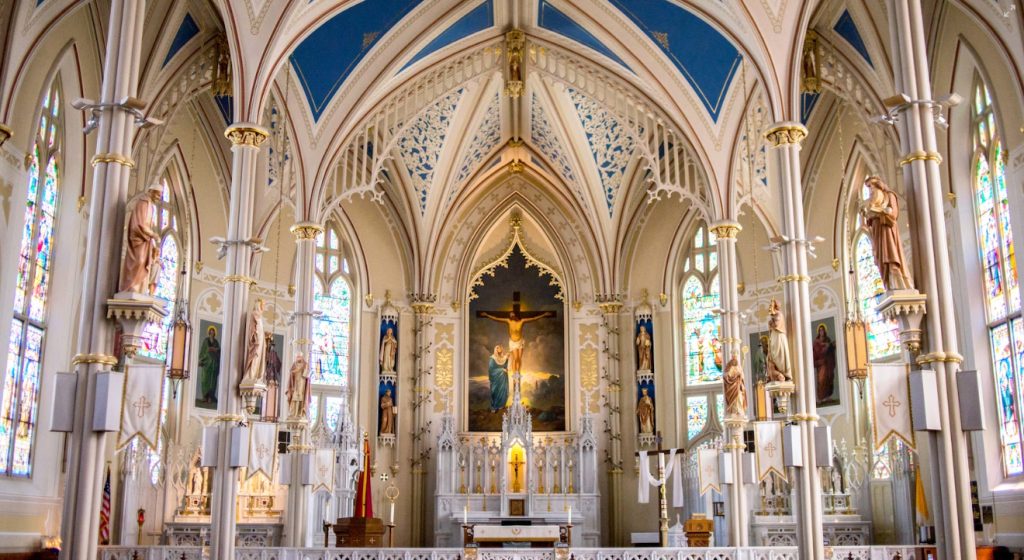Introduction Drainage is one of the most overlooked aspects of landscape design by contractors and homeowners. Instead, most people opt

Churches are not just buildings; they are places of worship, reflection, and community. The design of a church is crucial in creating a space that fosters the right atmosphere and enhances the spiritual experience of congregants. One of the most important aspects of church design is ventilation. Adequate ventilation is essential for maintaining indoor air quality, reducing the risk of airborne infections, and ensuring the comfort of churchgoers. In this blog post, we will explore the importance of MEP and HVAC design for church ventilation.
Poor ventilation can lead to a host of health issues, including allergies, asthma, and respiratory infections. In a crowded church environment, where people are singing, praying, and breathing, it is especially important to ensure proper air exchange rates to minimize the spread of airborne diseases. Moreover, good ventilation can help reduce the spread of odors and pollutants, creating a more pleasant environment for worshipers.
MEP (Mechanical, Electrical, and Plumbing) design is a critical component of church ventilation design. MEP engineers work to ensure that the church’s heating, ventilation, and air conditioning systems are designed to meet the specific needs of the space. For example, they will consider the size and shape of the building, the number of occupants, and the type of activities that will take place. MEP design for church ventilation will also take into account the unique requirements of religious services, such as the need for quiet operation during prayer or meditation.
HVAC (Heating, Ventilation, and Air Conditioning) design is an essential part of church ventilation design. HVAC systems are responsible for providing fresh air, maintaining comfortable temperatures, and controlling humidity levels. A well-designed HVAC system can help improve indoor air quality, reduce energy costs, and provide a comfortable environment for churchgoers. When designing an HVAC system for a church, engineers will consider factors such as the number of occupants, the size of the building, and the desired level of air quality.
When designing ventilation systems for churches, engineers need to consider several factors. First, they need to assess the building’s current ventilation system to determine whether it needs to be upgraded or replaced. Second, they need to consider the unique needs of the congregation, including the size of the group, the type of activities that will take place, and the age range of attendees. Third, they need to factor in the location of the church and the local climate, as this will impact the type of ventilation system required.

There are several types of ventilation systems that can be used in churches, depending on the specific requirements of the space. Here are some examples:
Natural Ventilation: Natural ventilation systems use natural airflow to regulate indoor air quality. This can be achieved through the use of operable windows, vents, and louvers. Natural ventilation is often used in smaller churches or older buildings that do not have HVAC systems.
Mechanical Ventilation: Mechanical ventilation systems use fans and ductwork to move air in and out of the building. These systems are typically used in larger churches or new construction projects. There are two types of mechanical ventilation systems: exhaust and supply. Exhaust systems remove stale air from the building, while supply systems bring fresh air in.
Hybrid Ventilation: Hybrid ventilation systems combine natural and mechanical ventilation to create a more energy-efficient solution. These systems use natural ventilation when outdoor conditions are favorable and switch to mechanical ventilation when necessary.
Proper ventilation design for churches can offer several benefits, including:
Improved Indoor Air Quality: A well-designed ventilation system can help reduce the levels of pollutants, allergens, and other contaminants in the air. This can help reduce the risk of respiratory infections and other health issues.
Enhanced Comfort: Adequate ventilation can help regulate temperature and humidity levels in the building, creating a more comfortable environment for worshipers.
Energy Efficiency: Proper ventilation design can help reduce energy costs by ensuring that HVAC systems are working efficiently.
Noise Reduction: Effective ventilation design can help reduce the noise level in the church, creating a more peaceful atmosphere for prayer and meditation.
Ventilation design is a critical component of church design. Proper ventilation can help ensure the health and comfort of churchgoers, reduce the risk of airborne infections, and create a more pleasant environment for worship. By working with experienced MEP and HVAC engineers, church leaders can design an effective ventilation system that meets the unique needs of their congregation. Whether you are building a new church or renovating an existing one, it is important to prioritize ventilation design to create a space that promotes spiritual growth, community, and wellbeing.
About Author
InnoDez